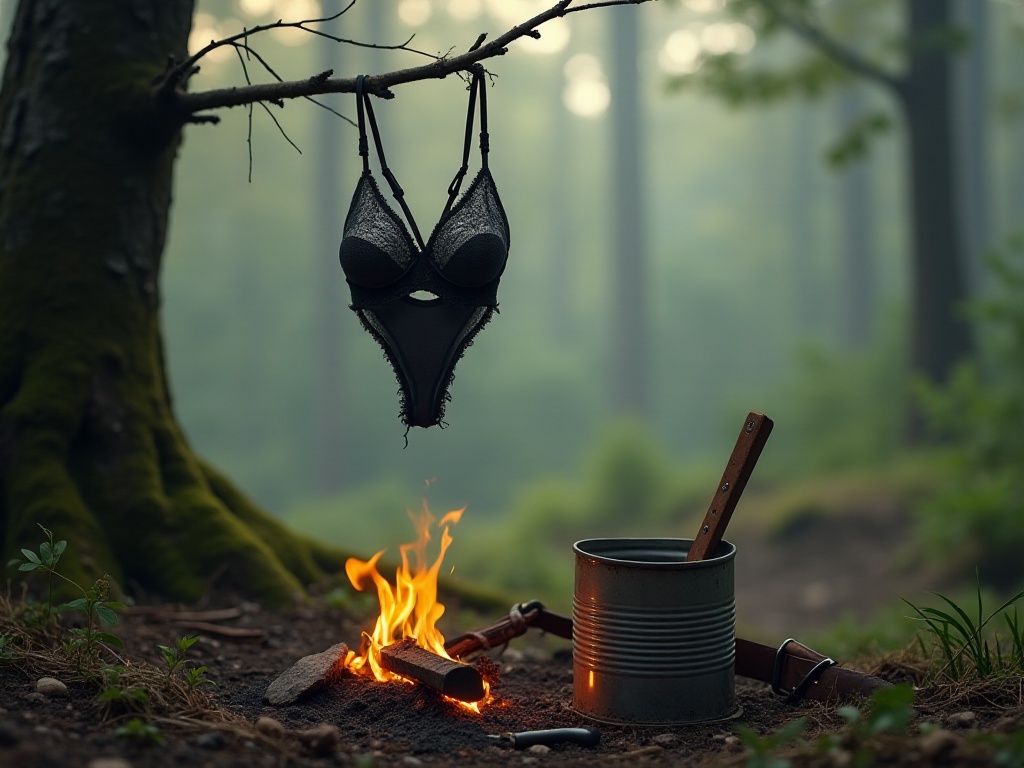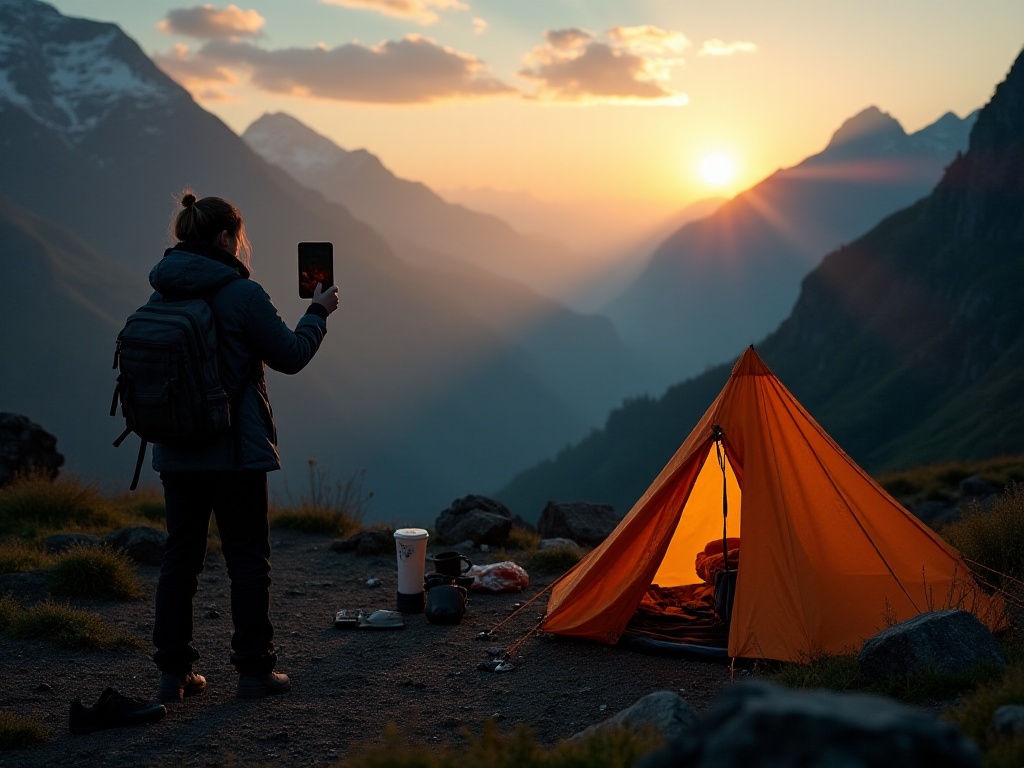Introduction
Hey, dear readers. Today I want to share my experiences and insights accumulated from years of wilderness adventures. Honestly, it pains me every time I see people getting into trouble in the wild due to insufficient preparation or lack of skills. With some key survival skills, outdoor adventures can become both safe and enjoyable.
As an outdoor enthusiast since college, I've been through countless wilderness adventures. From trekking in the Tibetan Plateau to exploring the Amazon rainforest, and camping in the African savannas, each experience has deepened my understanding of wilderness survival. I remember once getting lost with several companions in the primitive forests of New Zealand's South Island for three whole days. That experience taught me that wilderness survival isn't just a skill, but an accumulation of wisdom.
Preparation
Remember my first solo camping experience? I was too young then, thinking a tent and some dry food would be enough. Then it rained heavily, all equipment got wet, and I almost caught a cold. This lesson taught me the importance of thorough preparation.
First, studying the destination's terrain is essential. I suggest everyone thoroughly understand the route through satellite maps before departure. For instance, know where the resupply points are, what the slope gradients are like, and whether there are dangerous cliffs or rapids. I've seen people choose seemingly shorter but actually dangerous mountain paths due to unfamiliarity with the terrain, only to turn back halfway, wasting a lot of energy.
Second, understanding local climate patterns is crucial. Different seasons and regions have different weather patterns. For example, tropical regions often have afternoon thunderstorms; plateau regions can have temperature differences exceeding 20 degrees between day and night. I check historical weather data from meteorological departments to understand recent weather trends at the destination. Once while trekking in Tibet, it was precisely because we knew about possible heavy rain that we prepared adequate waterproof equipment, ultimately completing the entire journey safely.
Regarding the destination's plant situation, extra attention is needed. I've seen people develop rashes from not recognizing poison oak while hiking in American Redwood forests. I suggest learning to identify the most common poisonous plants at your destination before departure. For example, in North America, you must recognize the three-leaved poison ivy, poison oak, and poison sumac. In Asian tropical rainforests, you need to watch out for nettles and lacquer trees. I now use a plant identification APP to photograph and identify unfamiliar plants, which is particularly practical.
Itinerary notification is no small matter. 2023 data shows that over 75% of wilderness emergencies became disasters because they weren't discovered in time. I suggest not only telling friends and family your specific itinerary but also maintaining regular contact with them. If something does go wrong, rescue personnel can find you immediately. I now mark detailed itinerary plans, including expected rest stops and camping locations, on maps and send them to at least two trusted friends. And I arrange that if they don't hear from me after a specified time, they should call for help.
Physical preparation is also crucial. Many people think outdoor activities are just simple walking and stopping, but that's not the case. Walking with loads on complex terrain demands high physical fitness. I suggest starting targeted training at least a month before departure, including running, climbing stairs, and weighted walking. I remember my first attempt at a 5000+ meter snow mountain - due to insufficient pre-training, I experienced obvious altitude sickness at 4000 meters and had to turn back.

Equipment List
Speaking of equipment, I most recommend multi-functional tools. Do you know how many uses a roll of ordinary tape can have in the wilderness? It can repair tents, stabilize fractures, prevent blisters, and even make simple ropes. Statistics show that in 2024's wilderness rescue cases, over 40% of dangerous situations could have been resolved with simple tools.
Speaking of multi-functional tools, a Swiss Army knife is essential in my backpack. It can not only cut food and repair equipment but also make survival tools in critical moments. For instance, when my trekking pole broke once, I used the knife to carve a suitable branch as a replacement. Additionally, I carry a multi-functional plier, which is particularly useful for tasks requiring more strength.
Waterproof and thermal equipment are also crucial. I now use waterproof inner liners for my backpacks, which saves a lot of trouble. You can also use large garbage bags, which work well too. A real statistic: in below-zero environments, wet clothing increases body heat loss rate by 25 times. Regarding warmth, I particularly recommend the layered clothing method. The innermost layer should be close-fitting and quick-drying, the middle layer primarily for warmth, and the outer layer focusing on wind and water resistance. This combination can handle various weather changes.
Lighting tools are absolutely essential. I prepare a high-powered headlamp as primary lighting and carry a compact backup flashlight just in case. Modern LED headlamps have strong endurance, generally lasting over 48 hours of continuous use. But I still suggest carrying extra batteries, because in the wilderness, light source is life assurance.
For communication devices, besides phones, I also carry a satellite phone or distress beacon. Although these devices aren't cheap, their value far exceeds their cost when truly needed. I experienced this once when trekking in the Himalayas - a teammate developed altitude sickness, and fortunately, we had a satellite phone to contact rescue helicopters in time.
Supply selection also requires attention. I prepare some high-energy, easily portable food like energy bars, chocolate, and nuts. Water reserve is even more important - I usually carry enough water for one day's use, along with portable water filters and purification tablets for emergencies. I prepare food based on trip duration, generally 30% more than estimated usage to prepare for unexpected situations.
Medical supplies are another focus. A basic medical kit should include disinfectants, bandages, pain relievers, and antiallergic medications. For activities in remote areas, I also carry some antibiotics, though these should be used under medical guidance. Additionally, Band-Aids and athletic tape, though seemingly simple items, are essential - they can prevent and treat minor injuries.
Navigation equipment is indispensable. Although smartphones now have GPS functions, I still carry a professional handheld GPS device and traditional compass. This is because phone batteries have limited capacity, and there might be no signal in some areas. Once while trekking in Mongolia's Gobi Desert, it was these backup navigation tools that helped us accurately find resupply points.

Survival Skills
Speaking of survival skills, staying calm is most important. I remember once in Alaska, encountering a grizzly bear. If I hadn't stayed calm then, I probably wouldn't be here chatting with you now. According to wilderness survival experts' statistics, 90% of wilderness accidents are caused by panic leading to judgment errors.
When encountering dangerous situations, the first step is always to stop, breathe deeply, and assess the situation. A technique I often teach beginners is the "STOP" principle: Stop, Think, Observe, Plan. This simple method has helped me through many crisis moments. For instance, once while hiking on Jade Dragon Snow Mountain, we encountered dense fog with visibility less than 5 meters. If we had panicked and continued forward, we might have gone in the wrong direction or fallen. We used this principle, resting in place, waiting for the fog to dissipate while studying maps and GPS, ultimately safely escaping danger.
Obtaining clean water sources is another key skill. Did you know? Humans can only survive without water for maximum 3 days in the wilderness. But drinking directly from streams is very risky, as statistics show over 60% of natural water sources contain harmful microorganisms. I suggest carrying portable water filters or purification tablets. If these aren't available, at least boil the water. When camping in African savannas, I solved the drinking water problem by collecting morning dew, then filtering and boiling it.
The ability to find or build shelter is also important. In the wilderness, a good shelter can protect you from wind and rain, maintaining body temperature. I choose different shelter types based on different environments. In forests, you can use fallen trees and branches to build simple A-frame shelters; in snow, you can pile snow blocks to make snow houses. Once in Siberia, when our tent was damaged by strong winds, it was by building temporary shelter that we survived that cold night.
Fire-making skills are also essential in wilderness survival. They can be used not only for warmth and cooking but also for repelling wild animals and sending distress signals. I carry at least three different fire-starting tools: waterproof matches, lighters, and flint. Meanwhile, learn to find dry tinder in wet conditions. Inner tree bark and dried grass stems are good choices. In tropical rainforests during rainy seasons, I often use bamboo inner fibers as tinder.
Direction identification is another important skill. Even without a compass, you should learn to use natural phenomena to distinguish directions. For example, moss usually grows on the north side of trees in the Northern Hemisphere; at night you can determine direction through the North Star; during the day you can judge by the sun's position. While trekking in the Sahara Desert, I successfully found the camp by observing the sun's position and wind direction markers.
Wilderness first aid knowledge is equally important. Basic skills like bandaging, fixation, and CPR must be mastered. I've experienced situations like teammates spraining ankles or being bitten by poisonous insects, and each time these basic first aid skills solved the problems. I particularly recommend taking professional wilderness first aid training courses, as this knowledge could save lives in critical moments.
Identifying animal tracks and habits is also a useful skill. This not only helps you avoid danger but sometimes can help you find food and water sources. For example, many animals go to water sources to drink in early morning and dusk, following their tracks might lead you to water. On African savannas, I successfully avoided lion territories by observing animal activity patterns.

Environmental Awareness
Finally, I want to especially emphasize environmental awareness. According to recent surveys, over 1 million tons of garbage are abandoned in wilderness environments annually. These wastes take an average of 450 years to completely degrade. So please remember: whatever we bring into the mountains, we must bring out.
Environmental protection isn't just about not littering. When camping, choose sites with minimal environmental impact. For example, avoid camping in areas with fragile vegetation, don't arbitrarily cut living trees. I now carry biodegradable garbage bags and even pick up litter along the way. Once at Everest Base Camp, our team organized a cleanup activity, collecting nearly 100 kg of garbage.
Toilet practices in the wilderness also require environmental consideration. Stay at least 70 meters from water sources, dig holes 15-20 centimeters deep, and cover with soil after use. If conditions allow, it's best to bring toilet paper back for unified disposal. These details may seem troublesome, but they're all for protecting our shared Earth home.
Maintain reverence for wildlife. Don't feed them arbitrarily, and don't disturb them for photos. I've seen too many tourists approach wildlife for selfies, resulting in unnecessary harm. Remember, we are guests of nature, not masters.
Campfires also need special attention. If fire is necessary, choose safe locations, surround with stones, and ensure complete extinguishment before leaving. I pour water on fire pit ashes, then touch to confirm temperature, finally covering with a layer of soil.

Conclusion
Wilderness survival, ultimately, is about learning to coexist harmoniously with nature. Through these years of experience, I increasingly feel that mastering these skills not only protects ourselves but also helps us better appreciate nature's beauty. After each outdoor activity, I write detailed journey records, including lessons learned and reflections, which have become my most valuable assets.
I remember my feeling after completing my first solo long-distance trek: standing on the mountain top, looking at the sea of clouds below, that sense of achievement is indescribable. But more importantly, these experiences taught me to revere nature and cherish life. Looking back now, those difficult moments have become the most precious memories.
Through these years of adventure, I deeply understand: outdoor activities aren't about conquering nature, but better understanding ourselves and this world. Each journey is an opportunity for learning and growth. I hope these experiences can help you avoid detours in outdoor activities and gain more happiness.
Do you have any wilderness adventure experiences to share? Or questions about these techniques? Welcome to tell me in the comments. Next time we can talk about more interesting wilderness adventure stories.
Related articles




